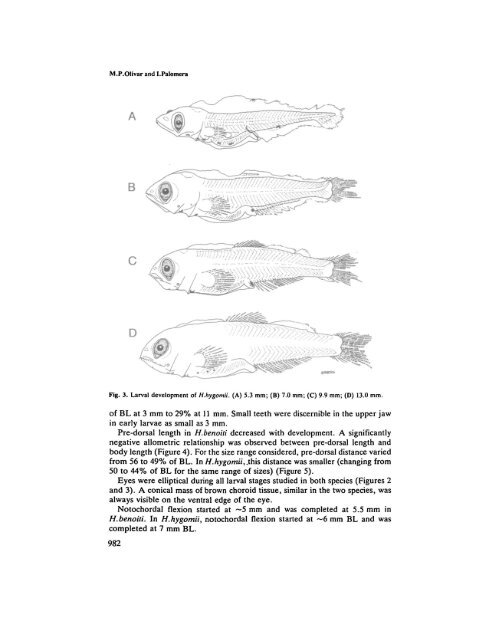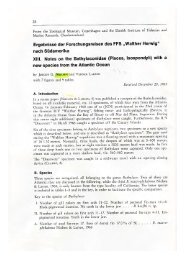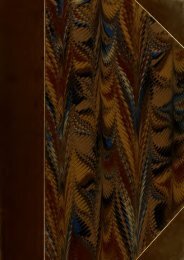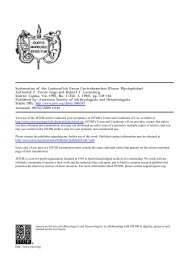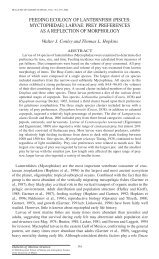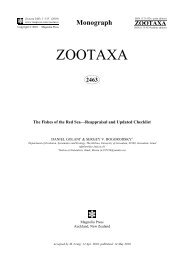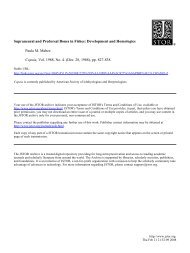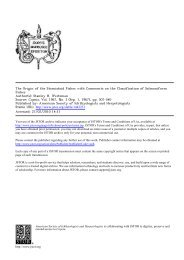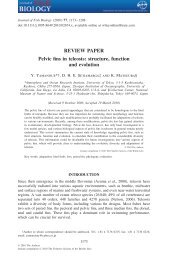Ontogeny and distribution of Hygophum benoiti (Pisces ...
Ontogeny and distribution of Hygophum benoiti (Pisces ...
Ontogeny and distribution of Hygophum benoiti (Pisces ...
Create successful ePaper yourself
Turn your PDF publications into a flip-book with our unique Google optimized e-Paper software.
M.P.OIivar <strong>and</strong> I.Palomera<br />
B<br />
Fig. 3. Larval development <strong>of</strong> H.hygomii. (A) 5.3 mm; (B) 7.0 mm; (C) 9.9 mm; (D) 13.0 mm.<br />
<strong>of</strong> BL at 3 mm to 29% at 11 mm. Small teeth were discernible in the upper jaw<br />
in early larvae as small as 3 mm.<br />
Pre-dorsal length in H.<strong>benoiti</strong> decreased with development. A significantly<br />
negative allometnc relationship was observed between pre-dorsal length <strong>and</strong><br />
body length (Figure 4). For the size range considered, pre-dorsal distance varied<br />
from 56 to 49% <strong>of</strong> BL. In H.hygomii,.this distance was smaller (changing from<br />
50 to 44% <strong>of</strong> BL for the same range <strong>of</strong> sizes) (Figure 5).<br />
Eyes were elliptical during all larval stages studied in both species (Figures 2<br />
<strong>and</strong> 3). A conical mass <strong>of</strong> brown choroid tissue, similar in the two species, was<br />
always visible on the ventral edge <strong>of</strong> the eye.<br />
Notochordal flexion started at ~5 mm <strong>and</strong> was completed at 5.5 mm in<br />
H.<strong>benoiti</strong>. In H.hygomii, notochordal flexion started at ~6 mm BL <strong>and</strong> was<br />
completed at 7 mm BL.<br />
982


